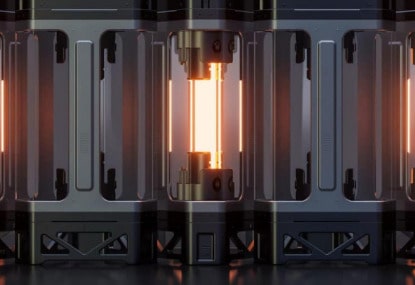Quantum batteries have the potential to store energy in a new class of compact and powerful devices that could fuel the adoption of renewable energy and massively reduce our dependence on fossil fuels.
Researchers at the University of Adelaide and their partners have taken a key step in making quantum batteries a reality. The team has successfully proved the concept of superabsorption, a crucial idea underpinning quantum batteries. The discovery could pave the way for a class of batteries that charge faster the bigger they get – as well as being able to charge just from ambient light in a room.
“Quantum batteries, which use quantum mechanical principles to enhance their capabilities, require less charging time the bigger they get,” said Dr. James Q. Quach, corresponding author of the study.
To prove the concept of superabsorption, the team built several wafer-like microcavities of different sizes which contained different numbers of organic molecules. Each was charged using a laser.
Researchers say the active layer of the microcavity contains organic semiconductor materials that store energy. Underlying the superabsorbing effect of the quantum batteries is the idea that all the molecules act collectively through a property known as quantum superposition.
“It is theoretically possible that the charging power of quantum batteries increases faster than the size of the battery, which could allow new ways to speed charging,” Quach said. “As the microcavity size increased and the number of molecules increased, the charging time decreased. This is a significant breakthrough and marks a major milestone in the development of the quantum battery.”
The idea of the quantum battery has the potential to significantly impact energy capture and storage in renewable energy and in miniature electronic devices. “The concepts that Dr. Quach and his team have worked on opens up the possibility of a new class of compact and powerful energy-storing devices,” said the University of Adelaide’s Professor Peter Veitch, Head of School of Physical Sciences.
The next step is to develop a fully functioning quantum battery prototype.
The quantum battery could serve many applications and fields. Proving the theory towards its realization is one more step towards this goal. It could perhaps one day supply electric cars with ultra-fast charging or even be used for the storage of energy with fluctuating flows, coming from renewable sources, for example.
Article: A step closer to quantum batteries with superabsorption breakthrough
